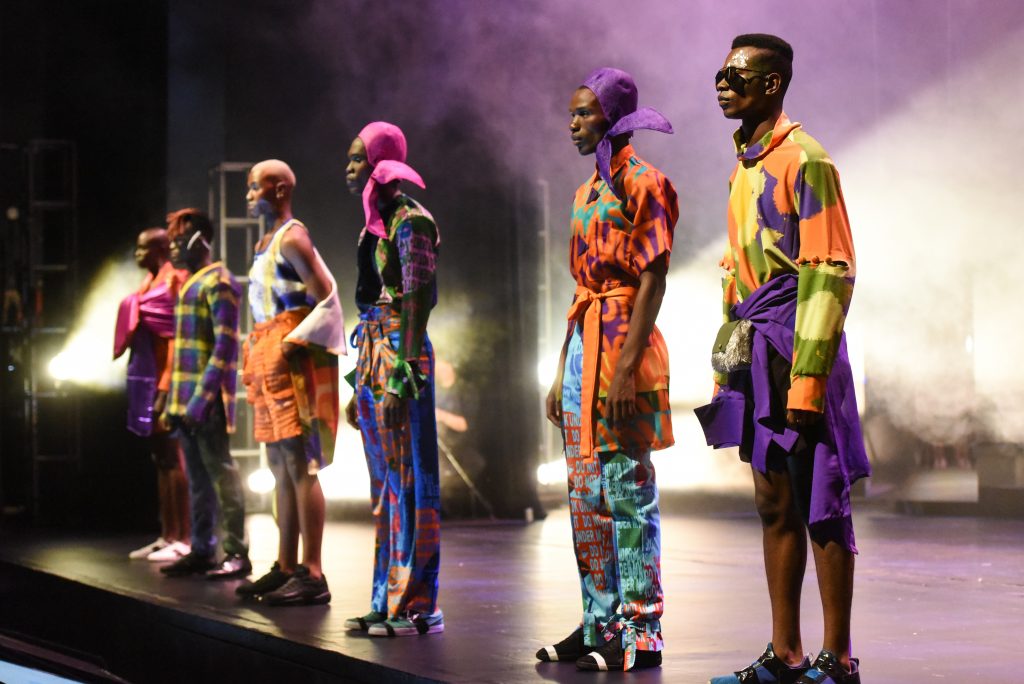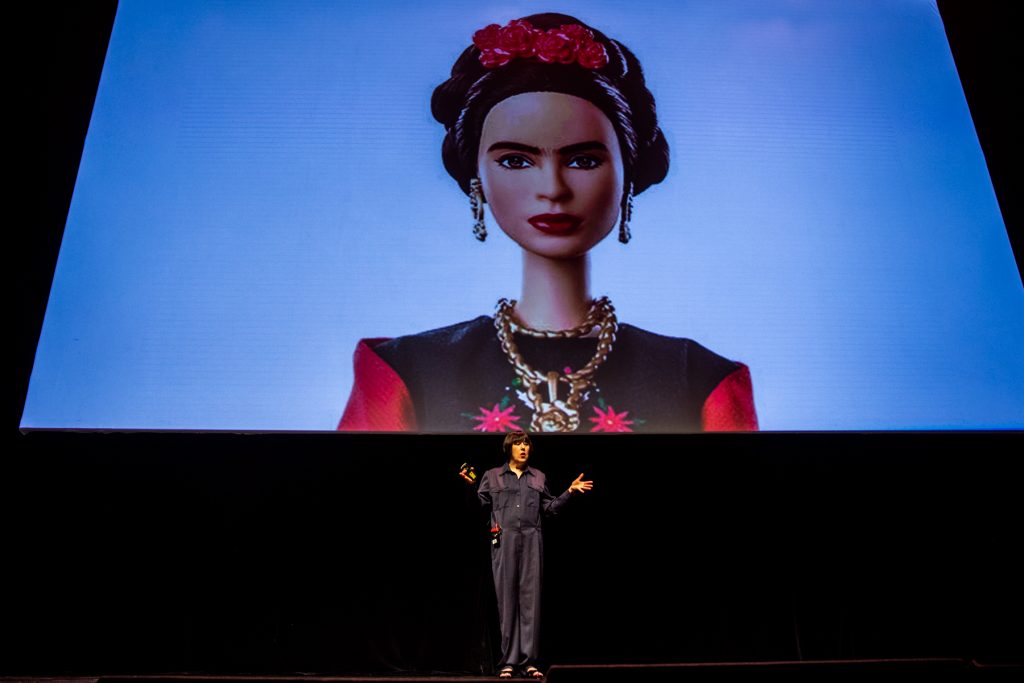Design Indaba 2018: Humans Helping Humans
Five designers show us how the world can be a better place thanks to their benevolent brilliance

Each year Design Indaba gathers together an anomalous group of creative people, from typographers to architects to ceramicists and more, to discuss their projects, process and passions. While each speaker is as different as the next, at times there are similarities in their work. This year we noticed a handful of designers particularly concerned with creating products that help humankind.
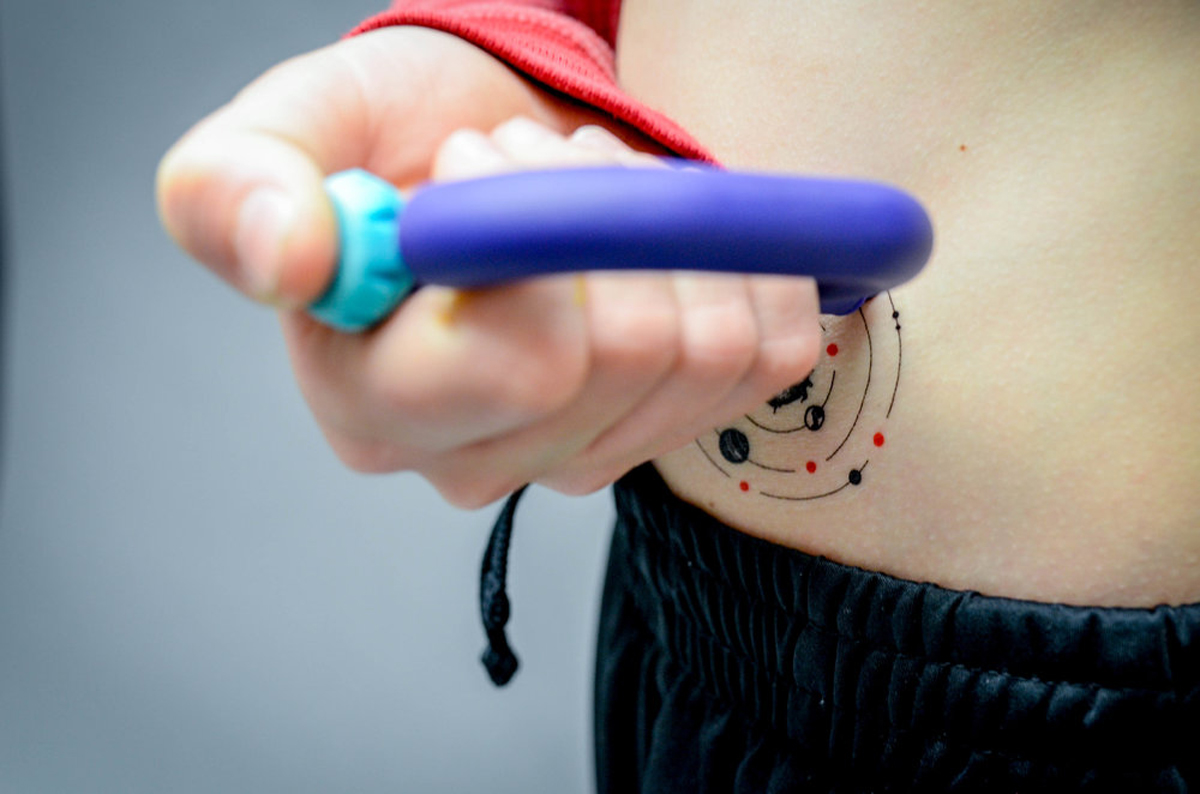
Renata Souza Luque
As a Product Design major at Parsons, Renata Souza Luque was already invested in thinking about how her profession could change the world when she found out her six-year-old nephew had been diagnosed with Type 1 diabetes. After hearing about the difficulties that children have with the disease—like a pen created for an adult-sized hands and having to remember where they’d previously injected insulin—she applied her skills to a kid-friendly kit called Thomy. The Dyson-award-winning set of tools includes a smaller, colorful and more tactile pen, as well as a packet of temporary tattoos that feature a whimsical illustration of colored dots. Each dot serves as a new injection point, and is removed with an alcohol swab to further decrease a chance of infection. Altogether, the kit helps kids be kids by adding an element of play to an otherwise clinical process.
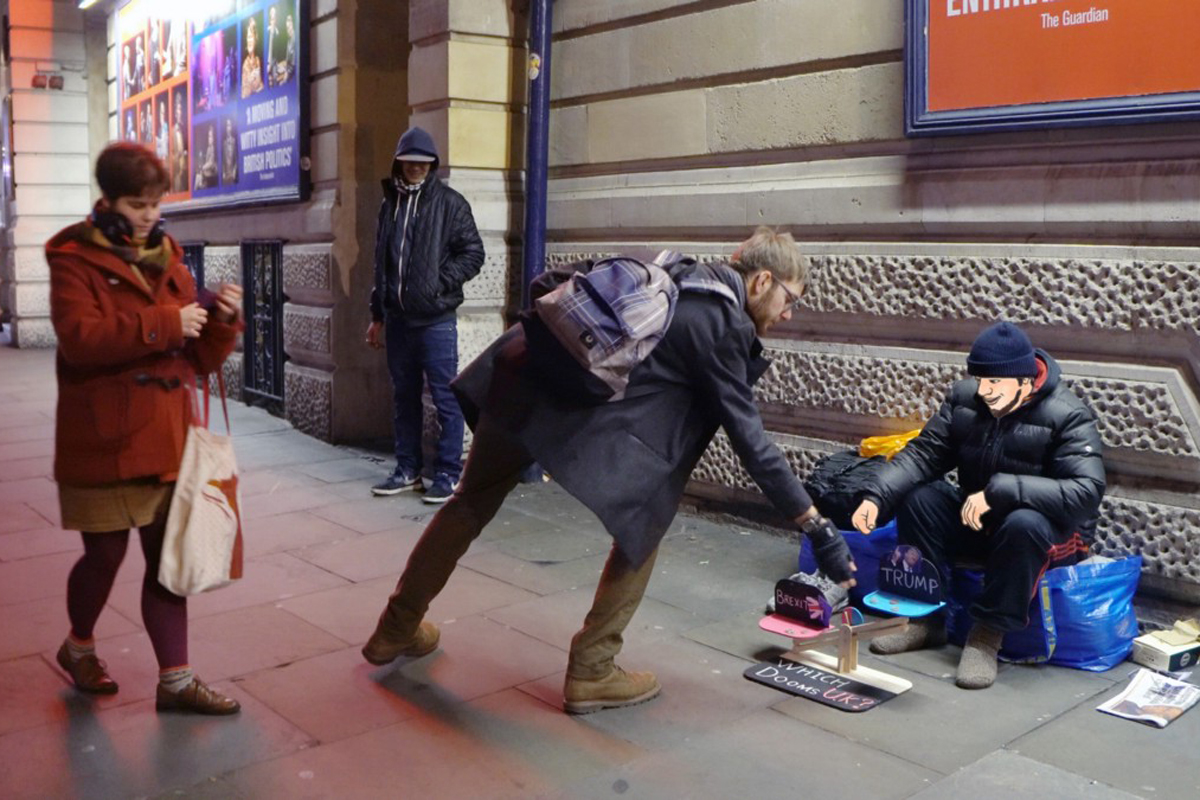
Tomo Kihara
A self-dubbed “playful interventionist,” TU Delft grad student Tomo Kihara uses research and design activism to reframe societal issues. His recent project, called Street Debaters, helps homeless people keep their dignity by earning money through public discourse instead of having to beg for spare change. Kihara tried out several ideas, from creating street games to taking Polaroids of people holding flowers, but a breakthrough came via the US election when people could vote for a candidate by placing a coin in front of their favorite nominee (which included Yoda). He decided to try it with other topics of debate, and created a wooden scale which he placed before a chalkboard stating two opposing opinions; passerby could drop a coin on the side of the scale that corresponded to their belief. As one can imagine, people enjoy expressing themselves and not only did the money pile up (the average income was £13.50 per hour) but it also inspired regular conversation between the homeless person and the person who stopped, which in turn helped form a better understanding and emotional connection among everyone.
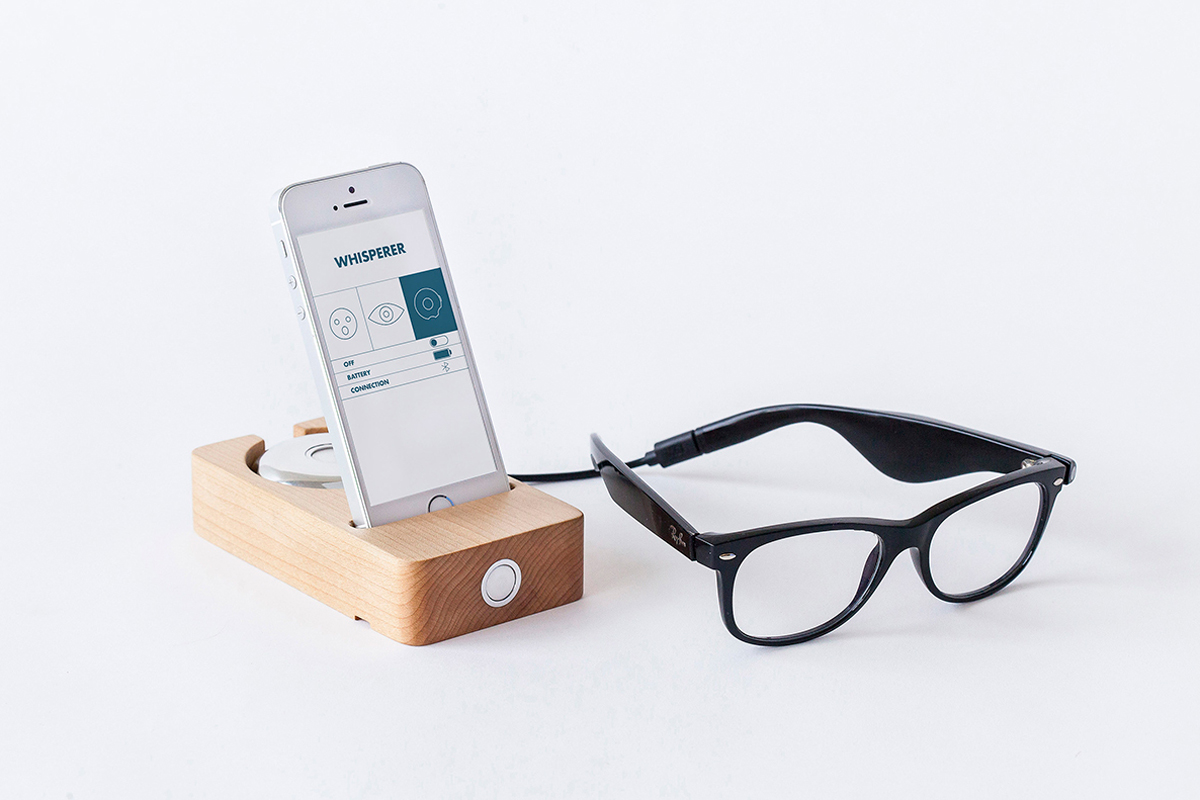
Simon Dogger
While in his second year at Design Academy Eindhoven, Simon Dogger lost his eyesight. After several years of rehabilitation, he decided to continue his design work and use the impairment to his advantage. He created the Emotion Whisperer, a wearable system that translates body language into haptic feedback. The product is threefold: a pair of eyeglasses with an integrated camera screens video images to a smartphone with emotion-recognition software; a smartphone which has a complex set of algorithms that are able to recognize the intensity levels of the six basic emotions (happiness, anger, sadness, disgust, attention and surprise); an electronic handheld device that has six physical places on it representing the emotions through dynamic vibrations. This means Dogger can actually feel someone smile at him, because as he explained, “The most beautiful thing in life is to understand people.”
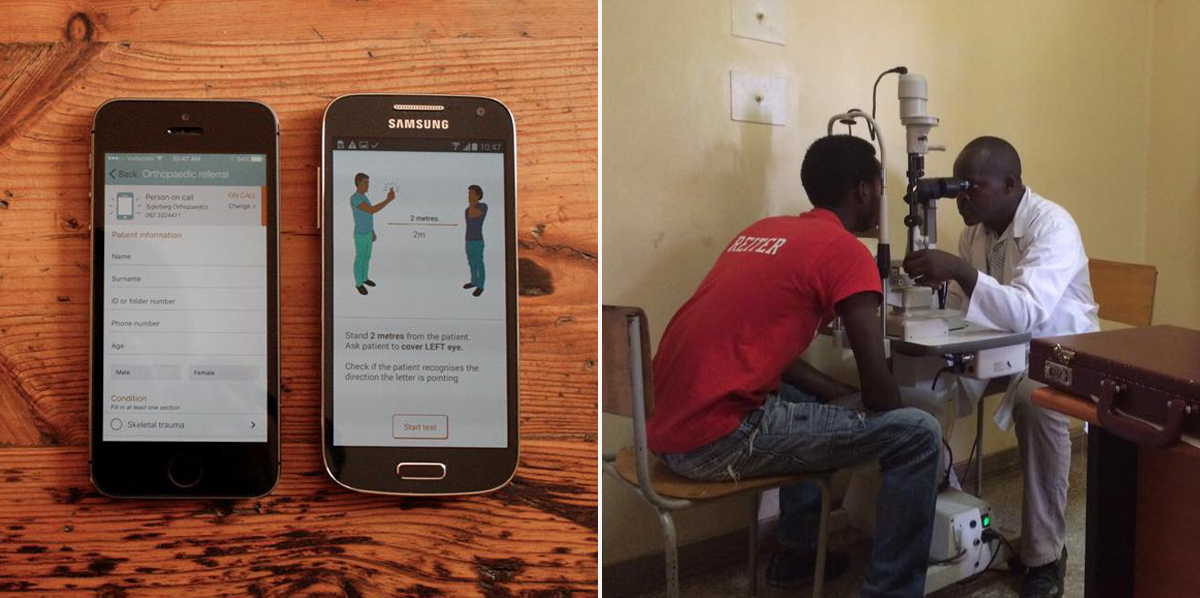
William Mapham
South Africa is a geographically large country without a lot of medical specialists in rural areas. Patients with extensive problems could go untreated simply due to the amount of time it could take for a primary doctor to receive expert advice. Ophthalmologist William Mapham experienced that firsthand while treating patients at a clinic in Swaziland; once a specialist himself, he realized many professionals like him were eager to help but were backed up, so queries would go unanswered. But he knew that if general practitioners had easier access to even small pieces of specific information, they could help to save someone’s life. Mapham decided to teach himself design and created Vula, an app that connects health workers in remote areas with the specialists they need. Vula makes it easy for doctors to send photos and exchange information quickly, and ultimately learn on the job—one GP told Mapham that she had gained so much knowledge through the app that she’s now able to treat a majority of her patients with unique ailments by herself.
Leroy Mwasaru
Usually sewage problems are issues for municipal government, but when 16-year-old Kenyan high school student Leroy Mwasaru saw his community’s only source of fresh water being contaminated by student waste he took it upon himself to affect change. He enlisted a group of friends to help, and together they came up with the Human Waste Bioreactor, a system that converts excrement into renewable fuel. Not only did this eliminate the issue of an infected water supply, but it became the energy that supplied the school’s stoves. Previously the kitchen used wood-burning fires to cook with, which both filled the chefs’ lungs with soot and required the school to cut down trees. The young entrepreneur is now applying to universities like Harvard in hopes to take his talent to the next level, like another brilliant mind from his own alma mater—President Barack Obama.
Images and videos courtesy of respective artists
